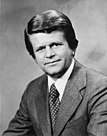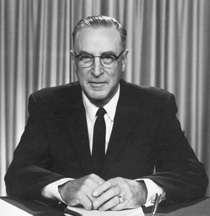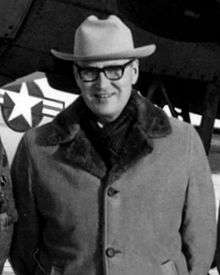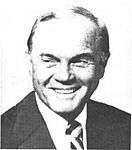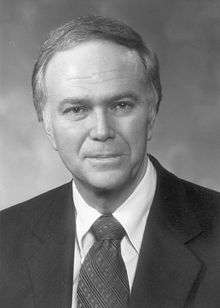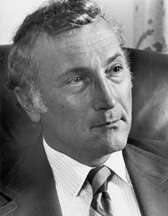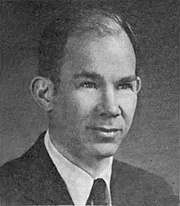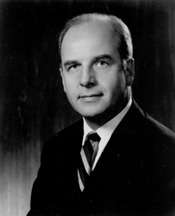United States Senate elections, 1974
|
| |||||||||||||||||||||||||||||||||||||||||||||||||||||||||||||||||||||||
| |||||||||||||||||||||||||||||||||||||||||||||||||||||||||||||||||||||||
34 of the 100 seats in the United States Senate 51 seats needed for a majority | |||||||||||||||||||||||||||||||||||||||||||||||||||||||||||||||||||||||
|---|---|---|---|---|---|---|---|---|---|---|---|---|---|---|---|---|---|---|---|---|---|---|---|---|---|---|---|---|---|---|---|---|---|---|---|---|---|---|---|---|---|---|---|---|---|---|---|---|---|---|---|---|---|---|---|---|---|---|---|---|---|---|---|---|---|---|---|---|---|---|---|
| |||||||||||||||||||||||||||||||||||||||||||||||||||||||||||||||||||||||
 Results Democratic gain Democratic hold Republican gain Republican hold | |||||||||||||||||||||||||||||||||||||||||||||||||||||||||||||||||||||||
| |||||||||||||||||||||||||||||||||||||||||||||||||||||||||||||||||||||||
The 1974 United States Senate elections were held in the wake of the Watergate scandal, Richard M. Nixon's resignation from the presidency, and Gerald Ford's subsequent pardon of Nixon. Economic issues, specifically inflation and stagnation, were also a factor that contributed to Republican losses.[2] Democrats made a net gain of three seats from the Republicans. Following the 1974 elections, the Democratic caucus controlled 60 seats (including one independent) and the Republican caucus controlled 39 seats (including one Conservative).
Democrats gained an additional seat in 1975 when Democrat John A. Durkin won a special election in New Hampshire that was held after the 1974 election resulted in two recounts and an extended dispute in the Senate.
This was the last Senate election where the Democrat won Orange County, California in a race with Republican opposition.
Gains and losses
Democrats won open seats in Vermont and Florida and unseated incumbents Peter H. Dominick (R-CO) and Marlow Cook (R-KY). Republicans took an open seat in Nevada, where Republican Paul Laxalt defeated Harry Reid by 624 votes. The election also produced other close results; Milton Young (R-ND) won reelection against Democrat William L. Guy by only 186 votes and Henry Bellmon (R-OK) won reelection against Democrat Ed Edmondson by half a percent of the vote. Bob Dole (R-KS) survived the closest election of his career against Democratic Rep. William Roy, a race undoubtedly made close due to Dole's close association with Nixon as chairman of the Republican National Committee. It was the closest the Democrats have come to winning a Senate election in Kansas since George McGill won re-election in 1932 (McGill was defeated by Clyde M. Reed in 1938).
Results summary
| Parties | Total Seats | Popular Vote | ||||||||||
|---|---|---|---|---|---|---|---|---|---|---|---|---|
| Incum bents |
Not up | This election | Result | +/- | Vote | % | ||||||
| Up | Re- elected |
Held | Gained | Lost | ||||||||
| Democratic | 57 | 37 | 20 | 15 | 4 | 60 | 22,544,761 | 55.24% | ||||
| Republican | 41 | 27 | 14 | 8 | 2 | 38 | 16,145,793 | 39.56% | ||||
| Conservative (N.Y.) | 1 | 1 | 0 | 1 | 822,584 | 2.02% | ||||||
| Independent | 1 | 1 | 0 | 1 | 199,108 | <0.01% | ||||||
| Others | 0 | 0 | 1,098,146 | 2.69% | ||||||||
| Total | 100 | 66 | 34 | 23 | 6 | 100 | 40,810,392 | 100.0% | ||||
Source: "Statistics of the Congressional Election of November 4, 1974 [sic]" (PDF). Office of the Clerk of the U.S. House of Representatives. 1975. Retrieved July 8, 2014.
Change in Senate composition
Before the elections
After the January 4, 1974 appointment in Ohio.
| D1 | D2 | D3 | D4 | D5 | D6 | D7 | D8 | D9 | D10 |
| D20 | D19 | D18 | D17 | D16 | D15 | D14 | D13 | D12 | D11 |
| D21 | D22 | D23 | D24 | D25 | D26 | D27 | D28 | D29 | D30 |
| D40 Ran |
D39 Ran |
D38 Ran |
D37 | D36 | D35 | D34 | D33 | D32 | D31 |
| D41 Ran |
D42 Ran |
D43 Ran |
D44 Ran |
D45 Ran |
D46 Ran |
D47 Ran |
D48 Ran |
D49 Ran |
D50 Ran |
| Majority → | D51 Ran | ||||||||
| R41 Retired |
C1 | I1 | D57 Retired |
D56 Retired |
D55 Retired |
D54 Ran |
D53 Ran |
D52 Ran | |
| R40 Retired |
R39 Retired |
R38 Retired |
R37 Ran |
R36 Ran |
R35 Ran |
R34 Ran |
R33 Ran |
R32 Ran |
R31 Ran |
| R21 | R22 | R23 | R24 | R25 | R26 | R27 | R28 Ran |
R29 Ran |
R30 Ran |
| R20 | R19 | R18 | R17 | R16 | R15 | R14 | R13 | R12 | R11 |
| R1 | R2 | R3 | R4 | R5 | R6 | R7 | R8 | R9 | R10 |
After the general elections
| D1 | D2 | D3 | D4 | D5 | D6 | D7 | D8 | D9 | D10 |
| D20 | D19 | D18 | D17 | D16 | D15 | D14 | D13 | D12 | D11 |
| D21 | D22 | D23 | D24 | D25 | D26 | D27 | D28 | D29 | D30 |
| D40 Re-elected |
D39 Re-elected |
D38 Re-elected |
D37 | D36 | D35 | D34 | D33 | D32 | D31 |
| D41 Re-elected |
D42 Re-elected |
D43 Re-elected |
D44 Re-elected |
D45 Re-elected |
D46 Re-elected |
D47 Re-elected |
D48 Re-elected |
D49 Re-elected |
D50 Re-elected |
| Majority → | D51 Re-elected | ||||||||
| D60 Gain |
D59 Gain |
D58 Gain |
D57 Hold |
D56 Hold |
D55 Hold |
D54 Hold |
D53 Re-elected |
D52 Re-elected | |
| I1 | C1 | R38 Gain |
R37 Hold |
R36 Hold |
R35 Re-elected |
R34 Re-elected |
R33 Re-elected |
R32 Re-elected |
R31 Re-elected |
| R21 | R22 | R23 | R24 | R25 | R26 | R27 | R28 Re-elected |
R29 Re-elected |
R30 Re-elected |
| R20 | R19 | R18 | R17 | R16 | R15 | R14 | R13 | R12 | R11 |
| R1 | R2 | R3 | R4 | R5 | R6 | R7 | R8 | R9 | R10 |
| Key: |
|
|---|
Race summary
Elections leading to the next Congress
In these general elections, the winners were elected for the term beginning January 3, 1975; ordered by state.
All of the elections involved the Class 3 seats.
| State (linked to summaries below) |
Incumbent | Results | Candidates | ||
|---|---|---|---|---|---|
| Senator | Party | Electoral history | |||
| Alabama | James Allen | Democratic | 1968 | Incumbent re-elected. | √ James Allen (Democratic) 95.8% Alvin Abercrombie (Prohibition) 4.2% |
| Alaska | Mike Gravel | Democratic | 1968 | Incumbent re-elected. | √ Mike Gravel (Democratic) 58.3% C. R. Lewis (Republican) 41.7% |
| Arizona | Barry Goldwater | Republican | 1952 1958 1964 (Retired) 1968 |
Incumbent re-elected. | √ Barry Goldwater (Republican) 58.3% Jonathan Marshall (Democratic) 41.7% |
| Arkansas | J. William Fulbright | Democratic | 1944 1950 1956 1962 1968 |
Incumbent lost renomination. New senator elected. Democratic hold. |
√ Dale Bumpers (Democratic) 84.9% John H. Jones (Republican) 15.1% |
| California | Alan Cranston | Democratic | 1968 | Incumbent re-elected. | √ Alan Cranston (Democratic) 60.5% H. L. Richardson (Republican) 36.2% Jack McCoy (American Independent) 1.7% Gayle M. Justice (Peace and Freedom) 1.6% |
| Colorado | Peter H. Dominick | Republican | 1968 | Incumbent lost re-election. New senator elected. Democratic gain. |
√ Gary Hart (Democratic) 57.2% Peter H. Dominick (Republican) 39.5% John McCandish King (Independent) 2.0% Joseph Fred Hyskell (Prohibition) 1.0% Henry John Olshaw (American) 0.3% |
| Connecticut | Abraham A. Ribicoff | Democratic | 1962 1968 |
Incumbent re-elected. | √ Abraham A. Ribicoff (Democratic) 63.7% James H. Brannen III (Republican) 34.3% |
| Florida | Edward J. Gurney | Republican | 1968 | Incumbent retired. New senator elected. Democratic gain. |
√ Richard Stone (Democratic) 43.4% Jack Eckerd (Republican) 40.9% John Grady (American) 15.7% |
| Georgia | Herman Talmadge | Democratic | 1956 1962 1968 |
Incumbent re-elected. | √ Herman Talmadge (Democratic) 71.7% Jerry Johnson (Republican) 28.2% |
| Hawaii | Daniel Inouye | Democratic | 1962 1968 |
Incumbent re-elected. | √ Daniel Inouye (Democratic) 82.9% James D. Kimmel (Independent) 17.1% |
| Idaho | Frank Church | Democratic | 1956 1962 1968 |
Incumbent re-elected. | √ Frank Church (Democratic) 56.1% Robert L. Smith (Republican) 42.1% Jean Stoddard (American) 1.8% |
| Illinois | Adlai Stevenson III | Democratic | 1970 (Special) | Incumbent re-elected. | √ Adlai Stevenson III (Democratic) 62.2% George M. Burditt (Republican) 37.2% |
| Indiana | Birch Bayh | Democratic | 1962 1968 |
Incumbent re-elected. | √ Birch Bayh (Democratic) 50.7% Richard Lugar (Republican) 46.4% Don L. Lee (American) 2.8% |
| Iowa | Harold Hughes | Democratic | 1968 | Incumbent retired. New senator elected. Democratic hold. |
√ John Culver (Democratic) 50.0% David M. Stanley (Republican) 49.3% |
| Kansas | Bob Dole | Republican | 1968 | Incumbent re-elected. | √ Bob Dole (Republican) 50.9% William R. Roy (Democratic) 49.1% |
| Kentucky | Marlow Cook | Republican | 1956 1962 1968 |
Incumbent lost re-election. New senator elected. Democratic gain. |
√ Wendell Ford (Democratic) 53.5% Marlow Cook (Republican) 44.1% William E. Parker (American) 2.4% |
| Louisiana | Russell B. Long | Democratic | 1948 (Special) 1950 1956 1962 1968 |
Incumbent re-elected. | √ Russell B. Long (Democratic) Unopposed |
| Maryland | Charles Mathias, Jr. | Republican | 1968 | Incumbent re-elected. | √ Charles Mathias, Jr. (Republican) 57.3% Barbara Mikulski (Democratic) 42.7% |
| Missouri | Thomas Eagleton | Democratic | 1968 | Incumbent re-elected. | √ Thomas Eagleton (Democratic) 60.1% Thomas B. Curtis (Republican) 39.3% Cliff Talmage (Independent) 0.6% |
| Nevada | Alan Bible | Democratic | 1954 (Special) 1956 1962 1968 |
Incumbent retired. New senator elected. Republican gain. |
√ Paul Laxalt (Republican) 47.0% Harry Reid (Democratic) 46.6% |
| New Hampshire | Norris Cotton | Republican | 1954 (Special) 1956 1962 1968 |
Incumbent retired. New senator elected. Republican hold. Incumbent resigned December 31, 1974. Winner was appointed December 31, 1974. Election was contested and later voided. |
√ Louis C. Wyman (Republican) 49.7% John A. Durkin (Democratic) 49.7% |
| New York | Jacob K. Javits | Republican | 1956 1962 1968 |
Incumbent re-elected. | √ Jacob K. Javits (Republican) 45.3% Ramsey Clark (Democratic) 38.2% Barbara A. Keating (Conservative) 15.9% Rebecca Finch (Socialist Workers Party) 0.1% William F Dowling Jr (Courage) 0.1% Robert E Massi (Socialist Labor) 0.08% Mildred Edelman (Communist) 0.08% Elijah Boyd Jr (Labor) 0.07% |
| North Carolina | Sam Ervin | Democratic | 1954 (Special) 1954 (Appointed) 1956 1962 1968 |
Incumbent retired. New senator elected. Democratic hold. |
√ Robert Burren Morgan (Democratic) 62.1% William E. Stevens (Republican) 37.0% |
| North Dakota | Milton Young | Republican | 1945 (Appointed) 1946 (Special) 1950 1956 1962 1968 |
Incumbent re-elected. | √ Milton Young (Republican) 48.4% William L. Guy (Democratic) 48.3% |
| Ohio | Howard Metzenbaum | Democratic | 1974 (Appointed) | Incumbent lost renomination. New senator elected. Democratic hold. Incumbent resigned December 23, 1974. Winner was appointed December 24, 1974. |
√ John Glenn (Democratic) 64.6% Ralph J. Perk (Republican) 30.7% |
| Oklahoma | Henry Bellmon | Republican | 1968 | Incumbent re-elected. | √ Henry Bellmon (Republican) 49.4% Ed Edmondson (Democratic) 48.9% |
| Oregon | Bob Packwood | Republican | 1968 | Incumbent re-elected. | √ Bob Packwood (Republican) 54.9% Betty Roberts (Democratic) 44.2% |
| Pennsylvania | Richard Schweiker | Republican | 1968 | Incumbent re-elected. | √ Richard Schweiker (Republican) 53.0% Peter F. Flaherty (Democratic) 45.9% George W. Shankey (Constitution) 1.1% |
| South Carolina | Ernest Hollings | Democratic | 1966 (Special) 1968 |
Incumbent re-elected. | √ Ernest Hollings (Democratic) 69.5% Gwenyfred Bush (Republican) 28.6% |
| South Dakota | George McGovern | Democratic | 1962 1968 |
Incumbent re-elected. | √ George McGovern (Democratic) 53.0% Leo K. Thorsness (Republican) 47.0% |
| Utah | Wallace F. Bennett | Republican | 1950 1956 1962 1968 |
Incumbent retired. New senator elected. Republican hold. |
√ Jake Garn (Republican) 50.0% Wayne Owens (Democratic) 44.1% |
| Vermont | George Aiken | Republican | 1940 (Special) 1944 1950 1956 1962 1968 |
Incumbent retired. New senator elected. Democratic gain. |
√ Patrick Leahy (Democratic) 49.5% Richard W. Mallary (Republican) 46.4% |
| Washington | Warren Magnuson | Democratic | 1944 1944 (Appointed) 1950 1956 1962 1968 |
Incumbent re-elected. | √ Warren G. Magnuson (Democratic) 60.7% Jack Metcalf (Republican) 36.1% Gene Goosman (American Independent) 2% Clare Fraenzl (Socialist Workers) 0.8% Pat Ruckert (U.S. Labor) 0.4% |
| Wisconsin | Gaylord Nelson | Democratic | 1962 1968 |
Incumbent re-elected. | √ Gaylord Nelson (Democratic) 61.8% Tom Petri (Republican) 35.8% |
Special election during the 95th Congress
In this special election, the winner was elected after January 3, 1975.
| State | Incumbent | Results | Candidates | ||
|---|---|---|---|---|---|
| Senator | Party | Electoral history | |||
| New Hampshire (Class 3) |
Norris Cotton | Republican | 1954 (Special) 1956 1962 1968 1974 (Retired) 1975 (Appointed) |
Interim appointee retired. New senator elected September 16, 1975. Democratic gain. |
√ John A. Durkin (Democratic) 53.6% Louis C. Wyman (Republican) 43.04% Carmen C. Chimento (American Independent) 3.4% |
Alabama
Alaska
Arizona
|
| |||||||||||||||||
| |||||||||||||||||
 U.S. Senate election results map. Red denotes counties won by Goldwater. Blue denotes those won by Marshall. | |||||||||||||||||
| |||||||||||||||||
Incumbent Republican Barry Goldwater decided to run for reelection to a second consecutive term, after returning to the U.S. Senate in 1968 following his failed Presidential run in 1964 against Lyndon B. Johnson. Goldwater defeated Democratic Party nominee philanthropist Jonathan Marshall in the general election.
| Party | Candidate | Votes | % | |
|---|---|---|---|---|
| Democratic | Jonathan Marshall, philanthropist | 79,225 | 53.55% | |
| Democratic | George Oglesby, attorney | 36,262 | 24.51% | |
| Democratic | William Mathews Feighan | 32,449 | 21.93% | |
| Total votes | 147,936 | 100.00 | ||
| Party | Candidate | Votes | % | ± | |
|---|---|---|---|---|---|
| Republican | Barry Goldwater | 320,396 | 58.26% | ||
| Democratic | Jonathan Marshall | 229,523 | 41.74% | ||
| Majority | 90,873 | 16.52% | |||
| Turnout | 549,919 | ||||
| Republican gain from Democratic | Swing | ||||
Arkansas
California
Colorado
Connecticut
Florida
|
| |||||||||||||||||||||||||||||||||||||
| |||||||||||||||||||||||||||||||||||||
| |||||||||||||||||||||||||||||||||||||
Incumbent Republican Edward Gurney declined to seek a second term after being indicted for taking bribes in return for his influence with the Federal Housing Administration.
The primary for the Republican nomination pitted Eckerd drug store owner Jack Eckerd against Florida Public Service Commissioner Paula Hawkins. Eckerd won handily, receiving approximately 67.5% of the vote.
| Party | Candidate | Votes | % | |
|---|---|---|---|---|
| Republican | Jack Eckerd | 186,897 | 67.49% | |
| Republican | Paula Hawkins | 90,049 | 32.52% | |
| Total votes | 276,946 | 100.00% | ||
The Democratic primary, however, was a crowded field with eleven candidates vying for the nomination. Because no candidate received a majority of the votes, U.S. Representative Bill Gunter and Secretary of State of Florida Richard Stone advanced to a run-off election. Stone won by a small margin of 1.68%.
| Party | Candidate | Votes | % | |
|---|---|---|---|---|
| Democratic | Richard Stone | 236,185 | 29.80% | |
| Democratic | Bill Gunter | 157,301 | 19.85% | |
| Democratic | Richard A. Pettigrew | 146,728 | 18.51% | |
| Democratic | Mallory Horne | 90,684 | 11.44% | |
| Democratic | Glenn W. Turner | 51,326 | 6.48% | |
| Democratic | George Balmer | 24,408 | 3.08% | |
| Democratic | Burton Young | 23,199 | 2.93% | |
| Democratic | Bob Brewster | 19,913 | 2.51% | |
| Democratic | David B. Higginbottom | 17,401 | 1.64% | |
| Democratic | Duaine E. Macon | 14,961 | 1.89% | |
| Total votes | 782,106 | 100.00% | ||
| Party | Candidate | Votes | % | |
|---|---|---|---|---|
| Democratic | Richard Stone | 321,683 | 50.84% | |
| Democratic | Bill Gunter | 311,044 | 49.16% | |
| Total votes | 632,727 | 100.00% | ||
Thus, Eckerd and Stone faced off in the general election. John Grady, a family physician and member of George Wallace's American Independent Party, performed exceptionally well for a third party candidate. Grady may have split the conservative vote, allowing for Stone to win. On election day, Stone received 43.38% of the vote, Eckerd garnered 40.91% of the vote, and Grady acquired 15.7% of the vote.
| Party | Candidate | Votes | % | |
|---|---|---|---|---|
| Democratic | Richard Stone | 781,031 | 43.38% | |
| Republican | Jack Eckerd | 736,674 | 40.91% | |
| American Independent | John Grady | 282,659 | 15.7% | |
| Independent | Jim Fair | 117 | 0.01% | |
| Independent | Henry J. Matthew | 35 | 0.00% | |
| Independent | Hortense L. Arvan | 13 | 0.00% | |
| Independent | Timothy L. "Tim" Adams | 10 | 0.00% | |
| Majority | 44,357 | 3.32% | ||
| Turnout | 1,800,539 | |||
| Democratic gain from Republican | ||||
Georgia
Hawaii
Idaho
Illinois
Indiana
Iowa
Kansas
Kentucky
Louisiana
Maryland
|
| |||||||||||||||||
| |||||||||||||||||
| |||||||||||||||||
Incumbent Republican Charles Mathias won re-election to a second term. As a Republican representing heavily-Democratic Maryland, Mathias faced a potentially difficult re-election bid for the 1974 election. State Democrats nominated Barbara Mikulski, then a Baltimore City Councilwoman who was well-known to residents in her city as a social activist, but with limited name recognition in the rest of the state.[5] Mathias was renominated by Republicans, fending off a primary election challenge from conservative doctor Ross Pierpont. Pierpont was never a substantial threat to Mathias, whose lack of competition was due in part to fallout from the Watergate scandal.[6][7]
As an advocate for campaign finance reform, Mathias refused to accept any contribution over $100 to "avoid the curse of big money that has led to so much trouble in the last year".[8] However, he still managed to raise over $250,000, nearly five times Mikulski's total. Ideologically, Mikulski and Mathias agreed on many issues, such as closing tax loopholes and easing taxes on the middle class. On two issues, however, Mathias argued to reform Congress and the U.S. tax system to address inflation and corporate price fixing, contrary to Mikulski.[5] In retrospect, The Washington Post felt the election was "an intelligent discussion of state, national, and foreign affairs by two smart, well-informed people".[9]
| Party | Candidate | Votes | % | |
|---|---|---|---|---|
| Republican | Charles McC. Mathias, Jr. (Incumbent) | 503,223 | 57.3 | |
| Democratic | Barbara A. Mikulski | 374,663 | 42.7 | |
| Invalid or blank votes | ||||
| Total votes | 877,886 | 100.00 | ||
| Turnout | ||||
| Republican hold | ||||
Missouri
Nevada
|
| |||||||||||||||||||||||||||||||||||||
| |||||||||||||||||||||||||||||||||||||
| |||||||||||||||||||||||||||||||||||||
Incumbent Democrat Alan Bible decided to retire instead of seeking a fourth full term. Republican nominee Paul Laxalt won the open seat.
Former Governor Paul Laxalt won by less than 700 votes, becoming one of the few bright spots in a bad year for Republicans. He beat Lieutenant Governor Harry Reid. Reid would succeed Laxalt twelve years later.
| Party | Candidate | Votes | % | ± | ||
|---|---|---|---|---|---|---|
| Republican | Paul Laxalt | 79,605 | 46.97% | +1.73% | ||
| Democratic | Harry Reid | 78,981 | 46.60% | -8.16% | ||
| Independent American | Jack C. Doyle | 10,887 | 6.42% | |||
| Majority | 624 | 0.37% | -9.15% | |||
| Turnout | 169,473 | |||||
| Republican gain from Democratic | ||||||
New Hampshire
|
| |||||||||||||||||
| |||||||||||||||||
| |||||||||||||||||
The New Hampshire election resulted in the longest contested election for the U.S. Congress in United States history.
In 1973, then-incumbent Senator Norris Cotton announced he would not seek re-election. Republican strategists admitted that it would be tough for their party to hold on to the seat.[12]
The campaign of 1974 pitted Democrat John A. Durkin, who had served as New Hampshire's Insurance Commissioner and as Attorney General, against Republican Louis C. Wyman, a conservative, widely known member of the United States House of Representatives from New Hampshire's 1st congressional district. As Wyman was the more experienced politician, he was predicted by many to win handily.[13]
On election day, Wyman won with a margin of just 355 votes. Durkin immediately demanded a recount, which, completed November 27, 1974, declared Durkin the winner by a margin of 2 votes. Republican Governor Meldrim Thomson, Jr. awarded Durkin a provisional certificate of election.
| Party | Candidate | Votes | % | |
|---|---|---|---|---|
| Republican | Louis Wyman | 110,926 | 49.6618% | |
| Democratic | John A. Durkin | 110,924 | 49.6609% | |
| American Independent | Carmen C. Chimento | 1,513 | 0.68% | |
| Plurality | 2 | 0.0009% | ||
| Turnout | 223,363 | |||
Wyman promptly appealed to the New Hampshire State Ballot Law Commission. Durkin tried to defeat the appeal in the New Hampshire courts. The state ballot commission conducted its own partial recount and announced on December 24, 1974, that Wyman had won by just two votes. Governor Thomson rescinded Durkin’s certificate, and awarded a new credential to Wyman.
Senator Cotton resigned December 31, 1974, and Governor Thomson appointed Wyman to fill the remainder of the term, which would expire January 3, 1975.
The election contest was not settled, however, and eventually a new election would be called, see below.
New Hampshire (Special)
|
| |||||||||||||||||
| |||||||||||||||||
| |||||||||||||||||
| |||||||||||||||||
As a last option to the disputed election above, Durkin petitioned the Senate, which had a 60-vote Democratic majority, to review the case, based on the Constitutional provision that each house of Congress is the final arbiter of elections to that body.
On January 13, 1975, the day before the new Congress convened, the Senate Rules Committee tried unsuccessfully to resolve the matter. Composed of five Democrats and three Republicans, the Rules Committee deadlocked 4–4 on a proposal to seat Wyman pending further review. Democrat James Allen voted with the Republicans on grounds that Wyman had presented proper credentials.
The full Senate took up the case on January 14, with Wyman and Durkin seated at separate tables at the rear of the chamber. Soon, the matter was returned to the Rules Committee, which created a special staff panel to examine 3,500 questionable ballots that had been shipped to Washington. Following this review, the Rules Committee sent a report of 35 disputed points in the election to the full Senate, which spent the next six weeks debating the issue, but resolved only one of the 35 points in dispute. Republicans successfully filibustered the seating of Durkin.[13]
Facing deadlock with the August recess approaching, The Washington Post ran an editorial on July 28 charging that it would be "incredible" if the Senate were to "go on vacation for a month without settling the New Hampshire Senate election case."[14] The Post suggested that Wyman and Durkin themselves should try to reach some agreement to settle the matter. Following up on the suggestion, Louis Wyman wrote to Durkin that day, urging him to support a new, special election. Durkin initially refused, but then on July 29, reversed his earlier position, and announced to a New Hampshire television audience his intention to agree to the new election.[15] The next morning, July 30, he reported this change to the Democratic leadership, thus relieving the Senate from further deliberations on the topic.
Later that same day, the Senate voted 71–21 to declare the seat vacant as of August 8. Governor Thomson this time appointed former Senator Norris Cotton to hold the seat temporarily. New Hampshire then arranged to hold a special election.
The special election was held on September 16, 1975. Widespread attention in the media resulted in a record-breaking turnout, which gave the election to Durkin by a 27,000-vote margin.[13][16]
| Party | Candidate | Votes | % | |
|---|---|---|---|---|
| Democratic | John A. Durkin | 140,778 | 53.62% | |
| Republican | Louis Wyman (Disputed incumbent) | 113,007 | 43.04% | |
| American Independent | Carmen C. Chimento | 8,787 | 3.35% | |
| Majority | 27,771 | 10.58% | ||
| Turnout | 262,572 | |||
| Democratic gain from Republican | ||||
New York
North Carolina
|
| |||||||||||||||||
| |||||||||||||||||
| |||||||||||||||||
| |||||||||||||||||
Incumbent Democrat Sam Ervin chose to retire. The general election was fought between the Democratic nominee Robert Morgan and the Republican nominee William Stevens.
| Party | Candidate | Votes | % | |
|---|---|---|---|---|
| Democratic | Robert Morgan | 294,986 | 50.40% | |
| Democratic | Nick Galifianakis | 189,815 | 32.43% | |
| Democratic | Henry Wilson | 67,247 | 11.49% | |
| Democratic | James Johnson | 6,138 | 1.05% | |
| Democratic | Others | 27,140 | 4.64% | |
| Turnout | 585,326 | |||
| Party | Candidate | Votes | % | |
|---|---|---|---|---|
| Republican | William Stevens | 62,419 | 65.12% | |
| Republican | Wood Hall Young | 26,918 | 28.08% | |
| Republican | B. E. Sweatt | 6,520 | 6.80% | |
| Turnout | 95,857 | |||
| Party | Candidate | Votes | % | ± | |
|---|---|---|---|---|---|
| Democratic | Robert Morgan | 633,647 | 61.56% | +1.00% | |
| Republican | William Stevens | 386,720 | 37.57% | -1.87% | |
| Other | 8,974 | 0.87% | N/A | ||
| Turnout | 1,029,341 | ||||
North Dakota
|
| |||||||||||||||||
| |||||||||||||||||
| |||||||||||||||||
Incumbent Republican Milton Young was re-elected to his sixth term, defeating North Dakota Democratic-NPL Party candidate William L. Guy, a former Governor of North Dakota.[11]
Only Young filed as a Republican, and the endorsed Democratic candidate was William L. Guy of Bismarck, North Dakota, who had served as Governor of the state from 1961 to 1973; and had presumably left the office to seek the senate seat. Young and Guy won the primary elections for their respective parties. Guy, who was very popular as governor throughout the state, and Young, who had a high approval rating as senator for the state, created the closest ever election for one of North Dakota's senate seats. Young won the election by only 177 votes, and Guy retired from politics.
Two independent candidates, James R. Jungroth and Kenneth C. Gardner, also filed before the deadline. Jungroth's platform was based on his opposition to strip mining the state's coal reserves.[18] Gardner would later run for the state's other seat in 1988 against then incumbent Quentin Burdick.
| Party | Candidate | Votes | % | ± | |
|---|---|---|---|---|---|
| Republican | Milton R. Young | 114,852 | 48.45% | ||
| Democratic | William L. Guy | 114,675 | 48.37% | ||
| Independent | James R. Jungroth | 6,679 | 2.82% | ||
| Independent | Kenneth C. Gardiner | 853 | 0.36% | ||
| Majority | 177 | 0.07% | |||
| Turnout | 237,059 | ||||
Ohio
|
| |||||||||||||||||
| |||||||||||||||||
| |||||||||||||||||
Incumbent Democrat Howard Metzenbaum was running for re-election his first full term after he was appointed in 1970 by Ohio governor John J. Gilligan to fill out the Senate term of William B. Saxbe, who had resigned to become United States Attorney General. Metzenbaum lost the primary election to retired astronaut John Glenn, who went on to win the general election and win every county in the state over Republican Ralph Perk, Mayor of Cleveland
| Party | Candidate | Votes | % | ± | |
|---|---|---|---|---|---|
| Democratic | John Glenn | 1,930,670 | 64.6% | ||
| Republican | Ralph Perk | 918,133 | 30.7% | ||
| Independent | Kathleen G. Harroff | 76,882 | 2.6% | ||
| Independent | Richard B. Kay | 61,921 | 2.1% | ||
| Independent | John O'Neill | 257 | 0.0% | ||
| Independent | Ronald E. Girkins | 88 | 0.0% | ||
Oklahoma
|
| |||||||||||||||||
| |||||||||||||||||
| |||||||||||||||||
Incumbent Republican Henry Bellmon narrowly won re-election to a second term, beating Representative Ed Edmondson by nearly 4,000 votes.
| Party | Candidate | Votes | % | ± | |
|---|---|---|---|---|---|
| Republican | Henry Bellmon | 390,997 | 49.4% | ||
| Democratic | Ed Edmondson | 387,162 | 48.9% | ||
| Independent | Paul E. Trent | 13,650 | 1.7% | ||
Oregon
|
| |||||||||||||||||
| |||||||||||||||||
| |||||||||||||||||
Incumbent Republican Bob Packwood won re-election to a second term. Betty Roberts was chosen to replace former U.S. Senator Wayne Morse, who won the Democratic primary but died before the general election.[21][22]
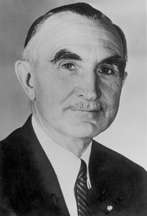
The Democratic primaries were held on May 28, 1974. Incumbent Senator Bob Packwood was running for re-election after his upset victory against popular incumbent Democrat Wayne Morse in 1968 made him the youngest member of the Senate.[23]
In the Democratic primary, former Senator Morse, trying to win back the seat he had for 24 years before losing to Packwood six years earlier, faced Oregon State Senate President Jason Boe and several other candidates for a chance to take back his Senate seat.[24] Boe, who was 45, made Morse's age, 73, an issue in the race while Morse said his experience in the Senate made him a stronger candidate.[25] Boe called for a series of debates around the state, but Morse refused. He went on to defeat Boe 49% to 39%, and planned to use the same strategy in the general election against Packwood, whose narrow victory over Morse 6 years earlier was attributed to Packwood's superior performance at a debate in Portland late in the campaign.[21]
| Party | Candidate | Votes | % | |
|---|---|---|---|---|
| Democratic | Wayne Morse | 155,729 | 48.98% | |
| Democratic | Jason Boe | 125,055 | 39.33% | |
| Democratic | Robert T. Daly | 21,881 | 6.88% | |
| Democratic | Robert E. O'Connor | 14,984 | 4.71% | |
| Democratic | (Scattering) | 319 | 0.10% | |
| Total votes | 396,204 | 100.00% | ||
In July, Morse was hospitalized in Portland with what was originally described as a serious urinary tract infection. His condition deteriorated and he died on July 22.[22] The death was originally reported to have been caused by kidney failure, but it was later revealed that Morse died of leukemia; Boe apparently knew of the diagnosis during the campaign but did not make it a campaign issue.[27]
The Oregon Democratic State Central Committee met on August 11, two days after Richard Nixon resigned the Presidency. They chose State Senator Betty Roberts over Boe to replace Morse as the Democratic nominee.[28] Roberts, an Oregon State Senator, had run for the Democratic nomination for Governor that year, but lost in the May primary to eventual general election winner Robert W. Straub.[28]
Outgoing Oregon governor Tom McCall, who had decided not to run in 1968, had pledged to Packwood a year earlier that he would not challenge him in 1974.[29] But as his term as governor ended, McCall began reconsidering his decision, believing he would bring more integrity to the job. In March 1974, at a dinner party held at Packwood's Washington D.C. home in McCall's honor, McCall informed Packwood that he would challenge him.[29] The news of McCall's change of plans soon reached the media. Eventually, McCall decided that he had little chance against Packwood, who had similar positions to his own and had a reputation for ruthless campaigning that McCall did not share.[29][30] McCall did not run, and Packwood was unopposed in the Republican primary.[24]
Strong Democratic gains were predicted, giving Roberts a good chance at an upset. In addition, the Senate had no female members and Roberts was one of three women (along with Barbara Mikulski in Maryland and Gwenyfred Bush in South Carolina) seeking a Senate seat.[31] But on the issues, Packwood and Roberts shared many positions, such as on abortion, military spending, and the environment.[32] Moreover, Packwood had distanced himself from Watergate, calling for Nixon's impeachment and denouncing Gerald Ford's pardon of Nixon.[32][33] Roberts was also at a financial disadvantage, having entered the race late and facing debt from her failed gubernatorial run; Packwood was able to use money he had raised for a primary challenge that never materialized, and led in most polls by a double-digit margin.[32]
Roberts lost the election to Packwood 54% to 44%.[34] Packwood was the only Oregon Republican up for re-election to keep his seat: Democrats won every other available seat. In the Governor's race, Bob Straub, who beat Roberts in the Democratic primary, defeated Vic Atiyeh to become the first Democrat elected governor since 1956; in the U. S. House of Representatives races, Les AuCoin won an open seat in the 1st district and in the 4th district, Jim Weaver upset incumbent John Dellenback.[35]
After the election, Roberts, whose criticism of Packwood's ethics was a theme in her campaign, considered filing a lawsuit against Packwood for misrepresenting her positions on gun control, abortion, and Social Security in campaign advertisements, but later dropped the idea.[36]
| Party | Candidate | Votes | % | |
|---|---|---|---|---|
| Republican | Bob Packwood | 420,984 | 54.93% | |
| Democratic | Betty Roberts | 338,591 | 44.18% | |
| Write-In | Jason Boe | 5,072 | 0.66% | |
| Write-In | Misc. | 1,767 | 0.23% | |
| Total votes | 766,414 | 100.00% | ||
| Republican hold | ||||
Pennsylvania
|
| |||||||||||||||||
| |||||||||||||||||
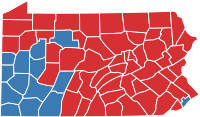 County results | |||||||||||||||||
| |||||||||||||||||
Incumbent Republican Richard Schweiker won re-election, defeating Democratic nominee Peter F. Flaherty, Mayor of Pittsburgh.
In the general election campaign, Schweiker faced popular Pittsburgh mayor Peter Flaherty. Both candidates, as highlighted by a New York Times article, "[took] firm stands against inflation, recession, big spending by the Federal Government and abortion on demand."[38] Schweiker, who was endorsed by the AFL–CIO, distanced himself from the Richard Nixon administration, specifically the Watergate scandal, by emphasizing his early calls for Nixon's resignation and the fact that he was on Nixon's "enemies list."[38]
In the end, Schweiker won re-election with 53% of the popular vote, with Flaherty winning 45.9%. Schweiker carried 53 of Pennsylvania's counties, a decrease from the 59 counties he carried in the 1968 election. Flaherty had a strong showing in Allegheny County, which contains his home town of Pittsburgh, which Schweiker had won in 1968. The final election results represented a political divide between the eastern and western portions of the state, Schweiker in the east and Flaherty in the west, with the exception of Flaherty's slim 4,491 vote victory in Philadelphia.[38]
| Party | Candidate | Votes | % | |
|---|---|---|---|---|
| Republican | Richard Schweiker (Incumbent) | 1,843,317 | 53.00% | |
| Democratic | Peter F. Flaherty | 1,596,121 | 45.89% | |
| Constitution | George W. Shankey | 38,004 | 1.09% | |
| N/A | Other | 370 | 0.01% | |
| Majority | 247,196 | 7.11% | ||
| Turnout | 3,477,812 | |||
| Republican hold | ||||
South Carolina
|
| |||||||||||||||||
| |||||||||||||||||
| |||||||||||||||||
The 1974 South Carolina United States Senate election was held on November 5, 1974 to select the U.S. Senator from the state of South Carolina. Incumbent Democratic Senator Fritz Hollings easily defeated Republican challenger Gwen Bush to win his second full term. Both Hollings and Bush faced no opposition in their party's primaries which allowed both candidates to concentrate solely on the general election. The Watergate scandal caused the Republicans to perform poorly nationwide in 1974 and Gwen Bush was little more than a sacrificial lamb. The main focus of the voters in South Carolina was on the competitive gubernatorial contest and Hollings easily cruised to a comfortable re-election.
| Party | Candidate | Votes | % | ± | |
|---|---|---|---|---|---|
| Democratic | Fritz Hollings | 355,107 | 69.4% | +7.5% | |
| Republican | Gwen Bush | 146,649 | 28.7% | -9.4% | |
| Independent | Harold Hough | 9,624 | 1.9% | +1.9% | |
| Majority | 208,458 | 40.7% | +16.9% | ||
| Turnout | 511,380 | 51.3% | -25.2% | ||
| Democratic hold | |||||
South Dakota
|
| |||||||||||||
| |||||||||||||
| |||||||||||||
Utah
Vermont
|
| |||||||||||||||||
| |||||||||||||||||
| |||||||||||||||||
Incumbent Republican George Aiken did not run for re-election to another term in the United States Senate. Democratic candidate, attorney and prosecutor Patrick Leahy defeated the Republican candidate, congressman Richard W. Mallary to succeed him.
| Party | Candidate | Votes | % | ± | |
|---|---|---|---|---|---|
| Republican | Richard W. Mallary | 27,221 | 59.1% | ||
| Republican | Charles R. Ross | 16,479 | 35.8% | ||
| Republican | T. Serse Ambrosini | 2,265 | 4.9% | ||
| Republican | Other | 61 | 0.1% | ||
| Total votes | 46,026 | 100.0% | |||
| Party | Candidate | Votes | % | ± | |
|---|---|---|---|---|---|
| Democratic | Patrick Leahy | 19,801 | 83.9% | ||
| Democratic | Nathaniel Frothingham | 3,703 | 15.7% | ||
| Democratic | Other | 97 | 0.4% | ||
| Total votes | 23,601 | 100.0% | |||
| Party | Candidate | Votes | % | ± | |
|---|---|---|---|---|---|
| Democratic | Patrick Leahy | 70,629 | 49.47% | ||
| Republican | Richard W. Mallary | 66,223 | 46.38% | ||
| Liberty Union | Bernie Sanders | 5,901 | 4.13% | ||
| N/A | Other | 19 | 0.0% | ||
| Total votes | 142,772 | 100.0% | |||
Washington
Wisconsin
|
| |||||||||||||||||
| |||||||||||||||||
| |||||||||||||||||
Incumbent Democrat Gaylord Nelson won re-election to a third term over Tom Petri, State Senator since 1973.
| Party | Candidate | Votes | % | ± | |
|---|---|---|---|---|---|
| Democratic | Gaylord Nelson | 740,700 | 61.8% | ||
| Republican | Tom Petri | 429,327 | 35.8% | ||
| American | Gerald L. McFarren | 24,003 | 2.0% | ||
| Lowering the Property Tax | Roman Blenski | 5,396 | 0.6% | ||
See also
Notes
- ↑ Harry F. Byrd Jr. (VA) was an Independent who caucused with the Democrats. In some circles he is called an "Independent Democrat," but his actual registration was listed as "Independent." See, e.g., United States Congress. "Harry Flood Byrd, Jr. (id: B001209)". Biographical Directory of the United States Congress.
- ↑ James M. Naughton (November 6, 1974). "Senate and House Margins Are Substantially Enlarged". New York Times. Archived from the original on March 5, 2016. Retrieved October 31, 2014.
- ↑ "AZ US Senate - D Primary Race - Sep 10, 1974". Our Campaigns. Retrieved 2017-12-19.
- ↑ "AZ US Senate Race - Nov 05, 1974". Our Campaigns. Retrieved 2017-12-19.
- 1 2 Barker, Karlyn (November 6, 1974). "Mathias Is Elected To a Second Term". The Washington Post. p. A12.
- ↑ Watson, Douglas (August 15, 1974). "Mathias Purge Threat Ends: White House Scandals Boost Senator's Re-election Bid". The Washington Post. p. C1.
- ↑ Barker, Karlyn (September 11, 1974). "Mathias Wins GOP Md. Race". The Washington Post. p. A24.
- ↑ Richards, Bill (February 3, 1974). "Sen. Mathias Re-Election Drive Opens". The Washington Post. p. B1.
- ↑ "U.S. Senate Choice in Maryland". The Washington Post. October 22, 1980. p. A22.
- ↑ "1974 Senatorial General Election Results - Maryland".
- 1 2 3 "Statistics of the Congressional Election of November 4, 1974 [sic]" (PDF). Office of the Clerk of the U.S. House. Retrieved July 8, 2014.
- ↑ Lydon, Christopher (December 17, 1973). "Republican Strategists See Major 1974 Election Losses for G.O.P.; Most Incredible'". The New York Times.
- 1 2 3 "Message from New Hampshire". Time. September 29, 1975.
- ↑ Glass, Andrew (July 29, 2015). "Closest election in Senate annals prompts 'do-over'". Politico.
- ↑ Wermiel, Stephen (July 30, 1975). "Durkin reverses, asks new N.H. vote". The Boston Globe.
- ↑ "Toledo Blade - Google News Archive Search". Retrieved February 18, 2017.
- 1 2 3 "North Carolina DataNet #46" (PDF). University of North Carolina. April 2008. Archived from the original (PDF) on July 25, 2008. Retrieved June 12, 2009.
- ↑ Our Campaigns - Candidate - James R. Jungroth
- ↑ "OH US Senate Race - Nov 05, 1974". Our Campaigns. Retrieved 2017-12-19.
- ↑ "OK US Senate Race - Nov 05, 1974". Our Campaigns. Retrieved 2017-12-19.
- 1 2 "No debate". The Register-Guard. April 9, 1974. Archived from the original on January 24, 2013. Retrieved January 29, 2010.
- 1 2 "Death claims ex-Sen. Wayne Morse". The Bulletin (Bend). July 22, 1974. Retrieved January 29, 2010.
- ↑ "From political obscurity, Packwood defeated veteran". The Bulletin (Bend). November 12, 1974. Retrieved February 1, 2010.
- 1 2 "Packwood, unopposed, spent most in Senate primary". The Bulletin (Bend). June 28, 1974. Retrieved January 29, 2010.
- ↑ Willis, Henny (May 26, 1974). "Four want to battle Packwood". The Register-Guard. Archived from the original on January 25, 2013. Retrieved January 29, 2010.
- ↑ "Oregon US Senate Democratic Primary Race, May 28, 1974". ourcampaigns.com. Retrieved January 29, 2010.
- ↑ "Leukemia claimed Wayne Morse". The Bulletin (Bend). May 28, 1975. Retrieved January 29, 2010.
- 1 2 "State Sen. Betty Roberts chosen to oppose Packwood". Tri City Herald. August 12, 1974. Retrieved January 29, 2010.
- 1 2 3 Walth, Brent (November 24, 1994). "McCall wanted Senate seat, despite pledge to Packwood". The Register-Guard. Retrieved February 1, 2010.
- ↑ "He won't run for Senate, says McCall". Tri City Herald. March 14, 1974. Retrieved February 1, 2010.
- ↑ "All-male ballots may soon become unusual". The Tuscaloosa News. September 19, 1974. Retrieved February 1, 2010.
- 1 2 3 Aarons, Leroy F. (October 24, 1974). "Packwood faces strong challenge from a woman". St. Petersburg Times. Retrieved February 1, 2010.
- ↑ "Packwood believes many Republicans want Nixon to quit". The Bulletin (Bend). March 27, 1974. Retrieved February 1, 2010.
- ↑ Robinson, Sue (November 6, 1974). "Packwood survives dark night". The Register-Guard. Retrieved January 29, 2010.
- ↑ Willis, Henny (November 6, 1974). "Weaver wins stunning upset". The Register-Guard. Retrieved February 2, 2010.
- ↑ "Election suit idea dropped by Roberts". The Register-Guard. November 16, 1974. Retrieved January 29, 2010.
- ↑ "Oregon US Senate Race, Nov 5, 1974". ourcampaigns.com. Retrieved January 29, 2010.
- 1 2 3 Sundquist, Renée M. Lamis ; with a foreword by James L. (2009). The realignment of Pennsylvania politics since 1960 : two-party competition in a battleground state. University Park, Pa.: Pennsylvania State University Press. pp. 100–102. ISBN 027103419X.
- 1 2 "Primary Election Results" (PDF). Office of the Vermont Secretary of State. Retrieved June 17, 2015.
- ↑ "General Election Results - U.S. Senator - 1914-2014" (PDF). Office of the Vermont Secretary of State. Retrieved June 17, 2015.
References
- Butler, Anne M., and Wendy Wolff. United States Senate Election, Expulsion and Censure Cases, 1793-1990. Washington: Government Printing Office, 1995.
- Tibbetts, Donn. The Closest U.S. Senate Race in History, Durkin v. Wyman. [Manchester, N.H.]: J.W. Cummings Enterprises, 1976.
- Minnesota Senate race echoes N.H. election in 1974
- Closest Election in Senate History
- The Election Case of John A. Durkin v. Louis C. Wyman of New Hampshire (1975)
- Senate Rules Committee Report
- Candidates Clash in New Hampshire Senate Contest The Bryan Times, Sept 15, 1975
- State Election Commission (1975). Report of the South Carolina State Election Commission. Columbia, SC: State Election Commission. p. 37.
- "12 Men, One Woman Aspire to Post In Washington". Sarasota Herald-Tribune. September 1, 1974. pp. 4–6. Retrieved September 6, 2017.
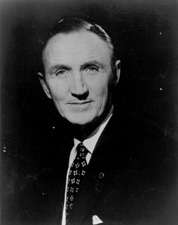

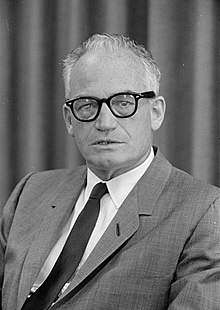

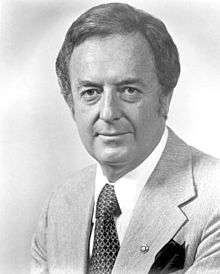
.jpg)
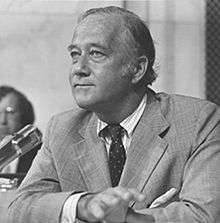
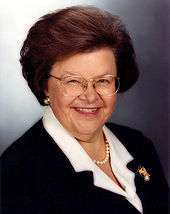

.jpg)

